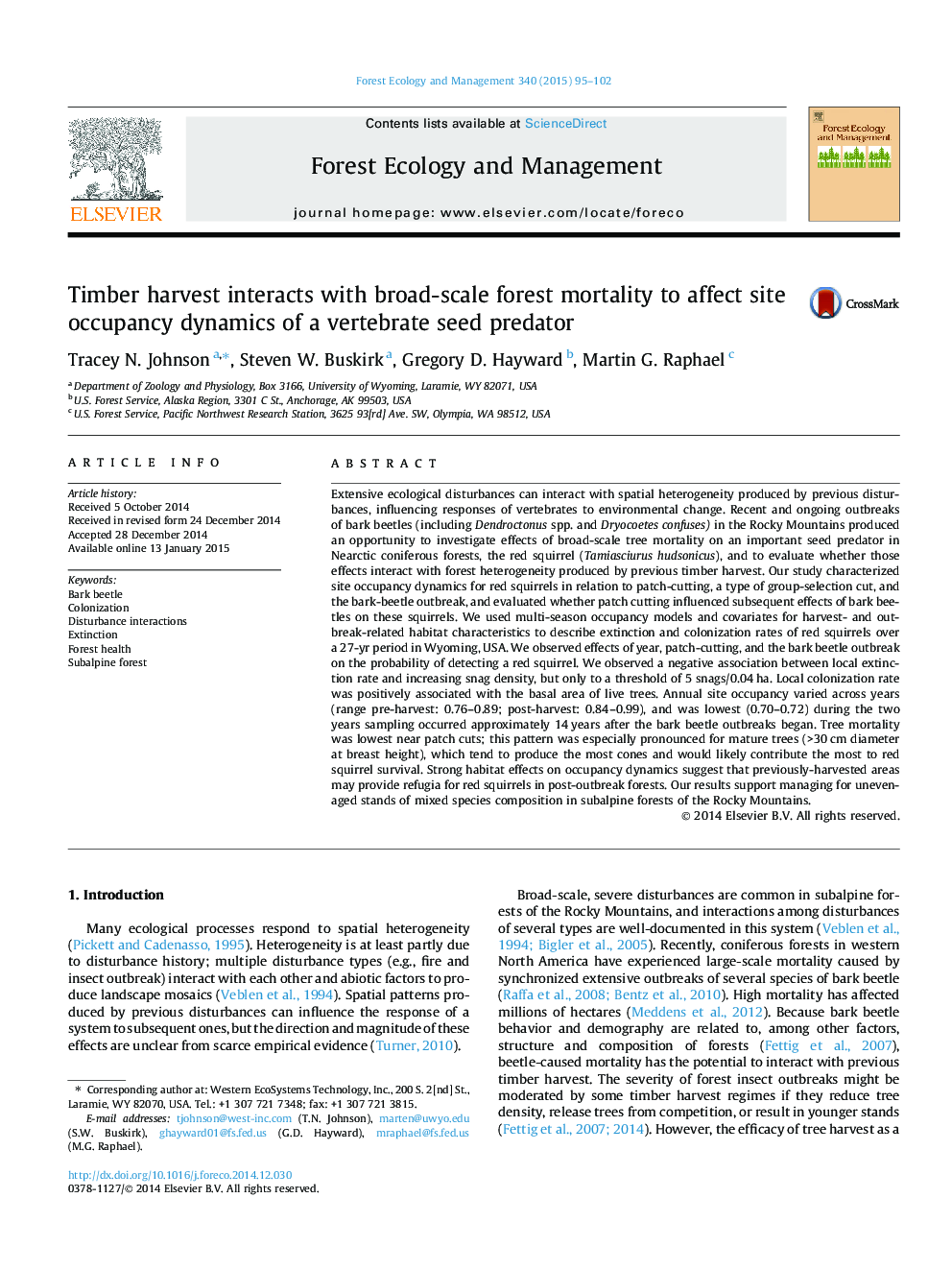| کد مقاله | کد نشریه | سال انتشار | مقاله انگلیسی | نسخه تمام متن |
|---|---|---|---|---|
| 86345 | 159180 | 2015 | 8 صفحه PDF | دانلود رایگان |
• We describe site occupancy dynamics for red squirrels in a subalpine forest.
• Extinction rate was influenced by snag density up to 5 snags/0.04 ha.
• Colonization rate was associated with the basal area of live trees.
• Harvested areas served as refugia for red squirrels after a bark beetle epidemic.
Extensive ecological disturbances can interact with spatial heterogeneity produced by previous disturbances, influencing responses of vertebrates to environmental change. Recent and ongoing outbreaks of bark beetles (including Dendroctonus spp. and Dryocoetes confuses) in the Rocky Mountains produced an opportunity to investigate effects of broad-scale tree mortality on an important seed predator in Nearctic coniferous forests, the red squirrel (Tamiasciurus hudsonicus), and to evaluate whether those effects interact with forest heterogeneity produced by previous timber harvest. Our study characterized site occupancy dynamics for red squirrels in relation to patch-cutting, a type of group-selection cut, and the bark-beetle outbreak, and evaluated whether patch cutting influenced subsequent effects of bark beetles on these squirrels. We used multi-season occupancy models and covariates for harvest- and outbreak-related habitat characteristics to describe extinction and colonization rates of red squirrels over a 27-yr period in Wyoming, USA. We observed effects of year, patch-cutting, and the bark beetle outbreak on the probability of detecting a red squirrel. We observed a negative association between local extinction rate and increasing snag density, but only to a threshold of 5 snags/0.04 ha. Local colonization rate was positively associated with the basal area of live trees. Annual site occupancy varied across years (range pre-harvest: 0.76–0.89; post-harvest: 0.84–0.99), and was lowest (0.70–0.72) during the two years sampling occurred approximately 14 years after the bark beetle outbreaks began. Tree mortality was lowest near patch cuts; this pattern was especially pronounced for mature trees (>30 cm diameter at breast height), which tend to produce the most cones and would likely contribute the most to red squirrel survival. Strong habitat effects on occupancy dynamics suggest that previously-harvested areas may provide refugia for red squirrels in post-outbreak forests. Our results support managing for uneven-aged stands of mixed species composition in subalpine forests of the Rocky Mountains.
Journal: Forest Ecology and Management - Volume 340, 15 March 2015, Pages 95–102
